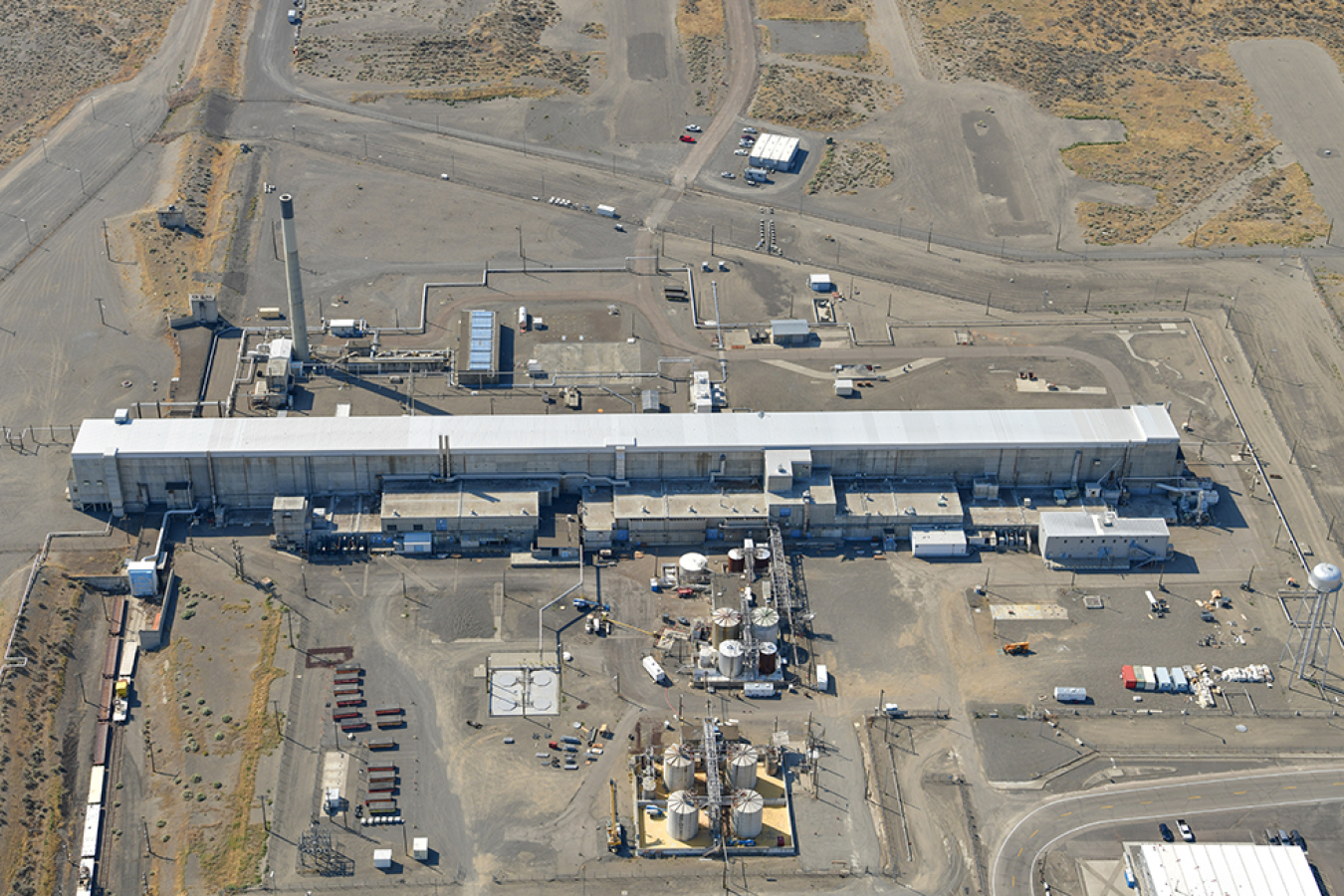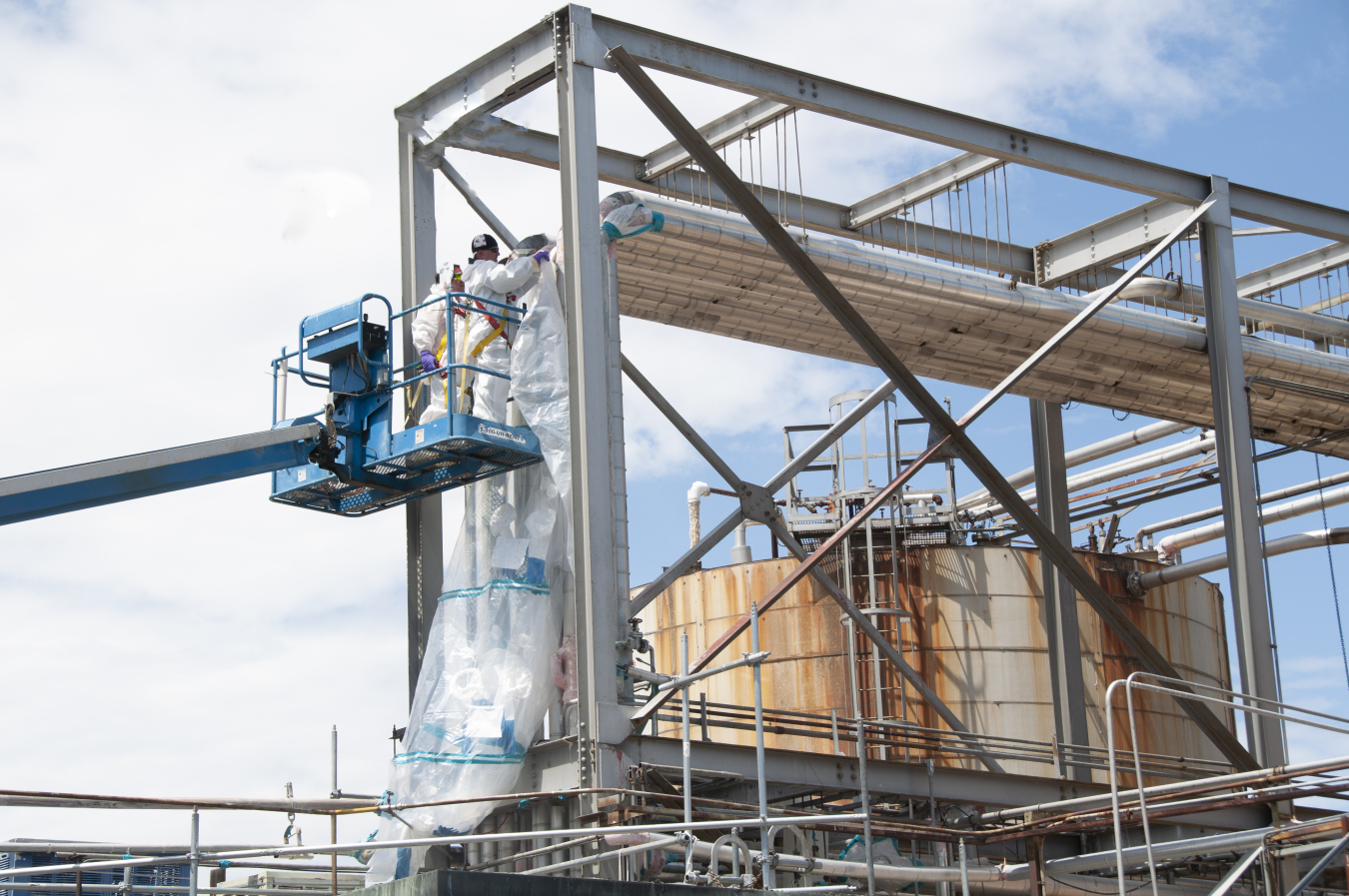Crews with EM Richland Operations Office (RL) contractor Central Plateau Cleanup Company (CPCCo) are performing risk-reduction activities to prepare a former plutonium processing facility on the Hanford Site for eventual disposition.
Office of Environmental Management
December 13, 2022
An aerial view of the Plutonium Uranium Extraction Plant. The main facility is at center. Also shown is the 211-A Chemical Storage Area, which is the open area just below the main facility, and the 203-A Acid Storage Area, which is the open area in foreground.
RICHLAND, Wash. – Crews with EM Richland Operations Office (RL) contractor Central Plateau Cleanup Company (CPCCo) are performing risk-reduction activities to prepare a former plutonium processing facility on the Hanford Site for eventual disposition.
The Plutonium Uranium Extraction Plant (PUREX) was the final and most advanced chemical separations plant on the site.
Cleanup is currently focused on the north side of the main PUREX facility, where crews are preparing the 211-A Chemical Storage Area and 203-A Acid Storage Area for equipment removal and demolition. Both areas contain chemical storage tanks, structures and equipment that supported operations.
“It will be a yearslong effort to get this large facility ready for disposition, and I’m encouraged by the progress to safely and efficiently advance this work,” said Andy Wiborg, RL Projects and Facilities Division team lead for Hanford’s Central Plateau Cleanup Project.

PUREX was key to Hanford’s plutonium production mission during the Cold War era. Nearly 70% of Hanford’s irradiated fuel rods were processed through PUREX, which was designed to recover plutonium from the uranium fuel.
The 211-A Area contains 20 chemical storage tanks. Eight small tanks are located inside a pump house. Crews recently began draining chemical lines inside the pump house to prepare for eventual demolition. The lines were flushed during the 1990s, but workers needed to confirm no process fluids remained. Workers also inspected and sampled inside tanks that had not been opened in decades, ensuring workers will be able to safely demolish them in coming months.
Workers have also been making progress cleaning up asbestos at the 203-A Acid Storage Area. Constructed in 1954, the 203-A Area consists of a pump house, a railroad loading dock and a secondary containment area that housed nine aboveground tanks. So far, crews have removed asbestos-contaminated insulation from nearly 1,600 of 1,900 feet of pipeline in the 203-A Area.
“Our crews are making excellent progress on a daily basis,” said Darin Corriell, CPCCo PUREX manager. “We have a team of highly skilled professionals who are focused on taking things step by step to ensure a safe, effective cleanup.”
To receive the latest news and updates about the Office of Environmental Management, submit your e-mail address.

